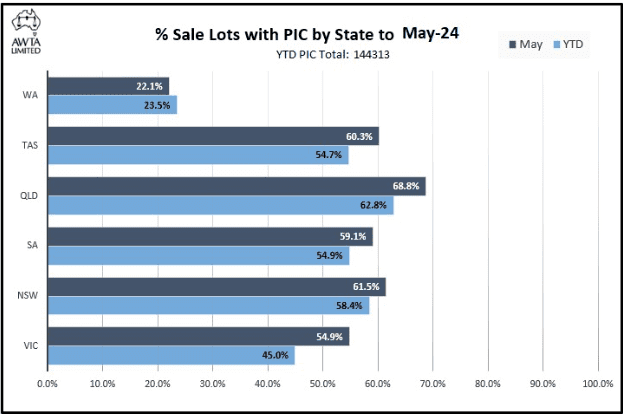
QUEENSLAND wool growers are leading the nation in declaring their Producer Identification Codes as a biosecurity measure.
According to the latest Australian Wool Testing Authority data, 62.8 percent of tested sale lots submitted by Queensland growers have declared a PIC to date, with 68.8pc in May.
The corresponding figures for the other states include: New South Wales 58.4pc/61.5pc; Tasmania 54.7pc/60.3pc; South Australia 54.9pc/59.1pc; Victoria 45pc/54.9pc and Western Australia 23.5pc/22.1pc.
According to 2021 ABS data, Queensland and Tasmania have the smallest sheep flocks, with just over 2 million head, whereas New South Wales had the largest flock of more than 24 million, followed by Victoria with 15m, Western Australia with almost 13m and South Australia with almost 11m.
The AWTA said the availability of the PIC data has been identified as a key tool in mitigating the impact of an emergency animal disease outbreak, by way of pinpointing affected wool between stores and dumps.
A high level of uptake is necessary for this data to be reliable, so work is being undertaken by industry groups to increase it, the AWTA said. Monitoring and reporting the transmission rate is a key part of this process, the testing authority said.
AWTA stores PICs that are declared by sellers as part of the presale testing process. Only the code is stored in AWTA’s database and it remains anonymous as the authority has no means of identifying or referencing which grower or property these codes represent.
AWTA managing director and hub spokesman Michael Jackson said the need for Australia’s wool industry to prepare for an EAD response is the primary driver and immediate priority of the proposed Australian Wool Traceability Hub.
Click here to see the latest AWTA data on PIC declaration.
Source – AWTA.

HAVE YOUR SAY